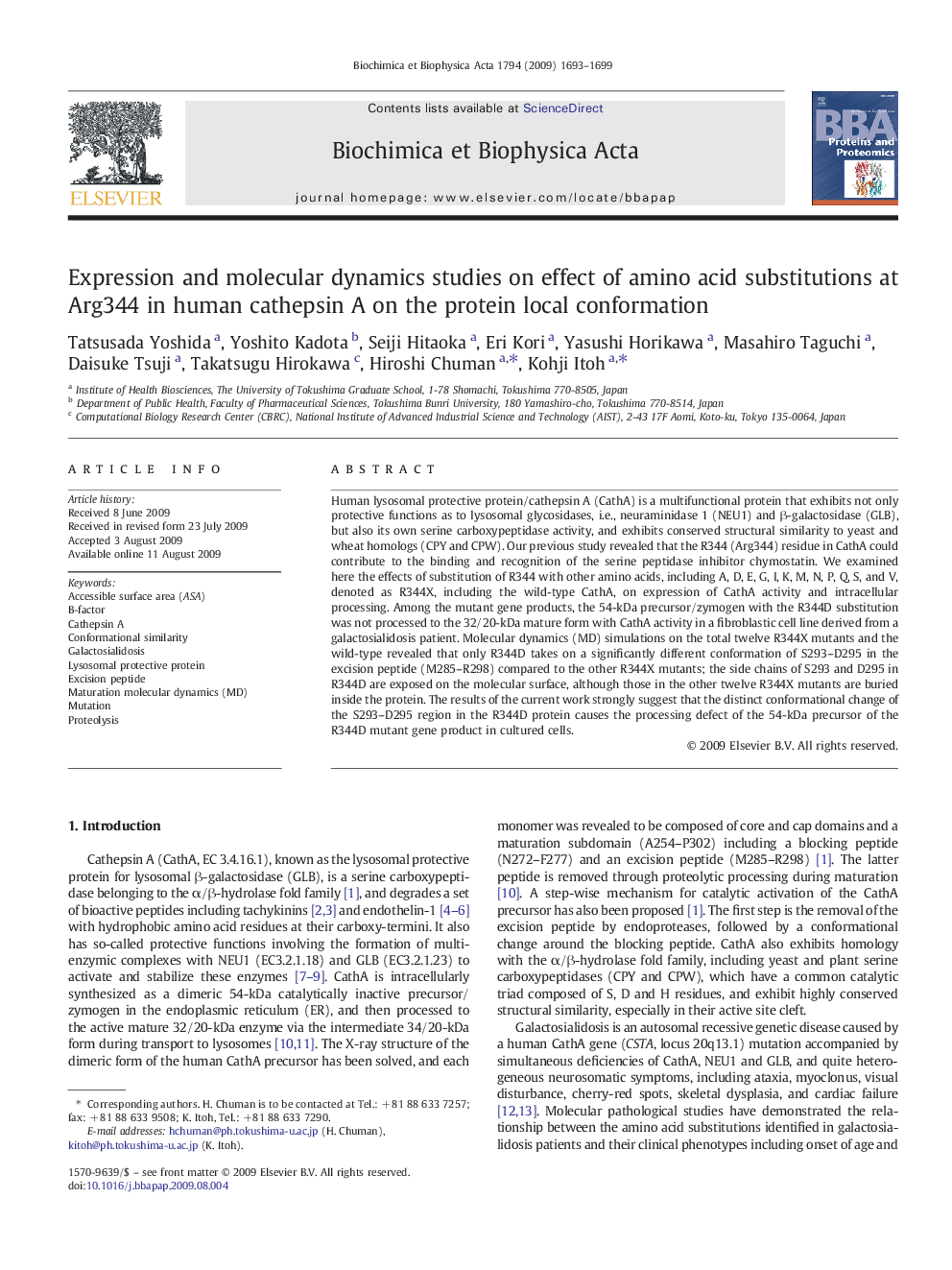| Article ID | Journal | Published Year | Pages | File Type |
|---|---|---|---|---|
| 1178946 | Biochimica et Biophysica Acta (BBA) - Proteins and Proteomics | 2009 | 7 Pages |
Human lysosomal protective protein/cathepsin A (CathA) is a multifunctional protein that exhibits not only protective functions as to lysosomal glycosidases, i.e., neuraminidase 1 (NEU1) and β-galactosidase (GLB), but also its own serine carboxypeptidase activity, and exhibits conserved structural similarity to yeast and wheat homologs (CPY and CPW). Our previous study revealed that the R344 (Arg344) residue in CathA could contribute to the binding and recognition of the serine peptidase inhibitor chymostatin. We examined here the effects of substitution of R344 with other amino acids, including A, D, E, G, I, K, M, N, P, Q, S, and V, denoted as R344X, including the wild-type CathA, on expression of CathA activity and intracellular processing. Among the mutant gene products, the 54-kDa precursor/zymogen with the R344D substitution was not processed to the 32/20-kDa mature form with CathA activity in a fibroblastic cell line derived from a galactosialidosis patient. Molecular dynamics (MD) simulations on the total twelve R344X mutants and the wild-type revealed that only R344D takes on a significantly different conformation of S293–D295 in the excision peptide (M285–R298) compared to the other R344X mutants; the side chains of S293 and D295 in R344D are exposed on the molecular surface, although those in the other twelve R344X mutants are buried inside the protein. The results of the current work strongly suggest that the distinct conformational change of the S293–D295 region in the R344D protein causes the processing defect of the 54-kDa precursor of the R344D mutant gene product in cultured cells.
